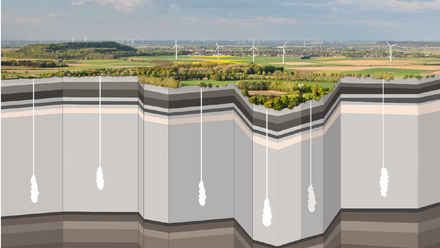The rise of hydrogen trains: A path to net zero rail networks

Hydrogen-powered trains are emerging as a transformative solution for decarbonising rail transport. The technology offers an approach to reducing emissions and fostering sustainable travel, with significant steps already taken worldwide.
The U.S. recently made its own leap by launching the first hydrogen-powered passenger train in San Bernardino, California. Known as the Zero Emission Multiple Unit (ZEMU), this train carries 108 passengers and will begin full service in 2025. The debut marks an important moment in the global shift towards zero-emission public transport.
Germany introduced the world's first hydrogen train in 2018, setting a benchmark for others to follow. The UK is also exploring hydrogen technology as part of its effort to phase out diesel-powered trains by 2040, while France has placed orders for hydrogen trains to operate on regional lines starting in 2025. These global initiatives signal a growing recognition of hydrogen's potential in modernising rail networks.
Electric vs. Hydrogen Rail: Weighing the Options
Both electric and hydrogen trains offer emissions-free operation at the point of use, making them suitable for the rail industry's sustainability goals.
Electric trains rely on an external power supply, which may not always be generated from renewable sources, potentially increasing overall carbon emissions. The infrastructure required for electric trains, such as overhead power cables and substations, is also costly and complex. While battery-powered electric trains could simplify infrastructure needs, they would create a demand for fast-charging stations or battery-swapping facilities.
Hydrogen, on the other hand, presents a different set of advantages. It can store a higher amount of energy, powering trains either through combustion engines or fuel cells that generate electricity. The infrastructure investment for hydrogen-powered rail is generally lower than that for electrification, making it a potentially more accessible option for regions without extensive rail infrastructure.
Read more: This is how hydrogen trains could transform transport

![Steel [canva]](https://www.igem.org.uk/static/50be7f75-c475-4a0a-9980bc2553030d23/resourcegridlistingimagedefault_4d12532919c64e60a22baf03232bbf94_4a7c7e45a350/Steel-canva.png)

![Mountains [canva]](https://www.igem.org.uk/static/0d138f41-6894-416a-b2ecb49adeb8ba37/resourcegridlistingimagedefault_4d12532919c64e60a22baf03232bbf94_4a7c7e45a350/Mountains-canva.png)


